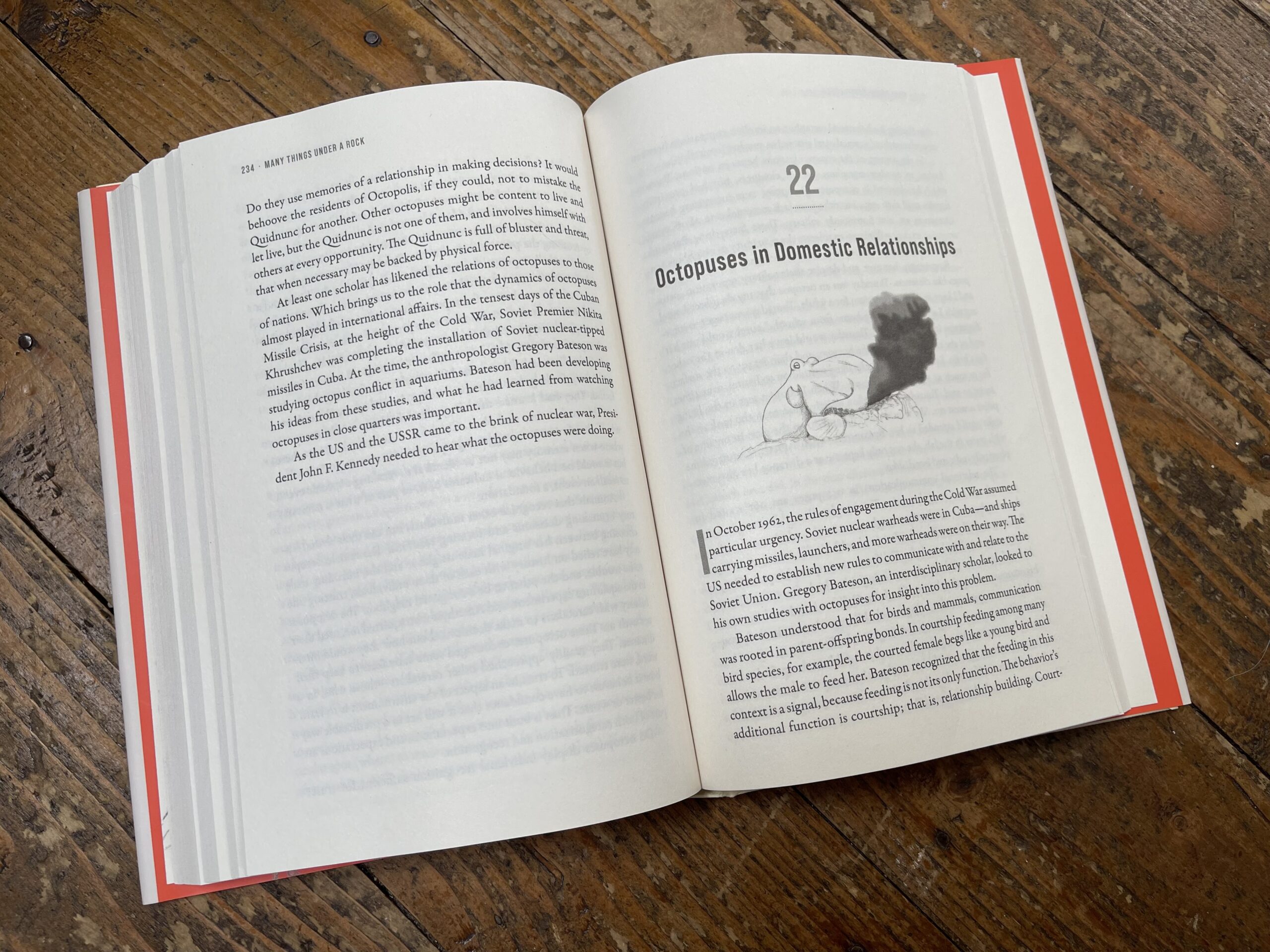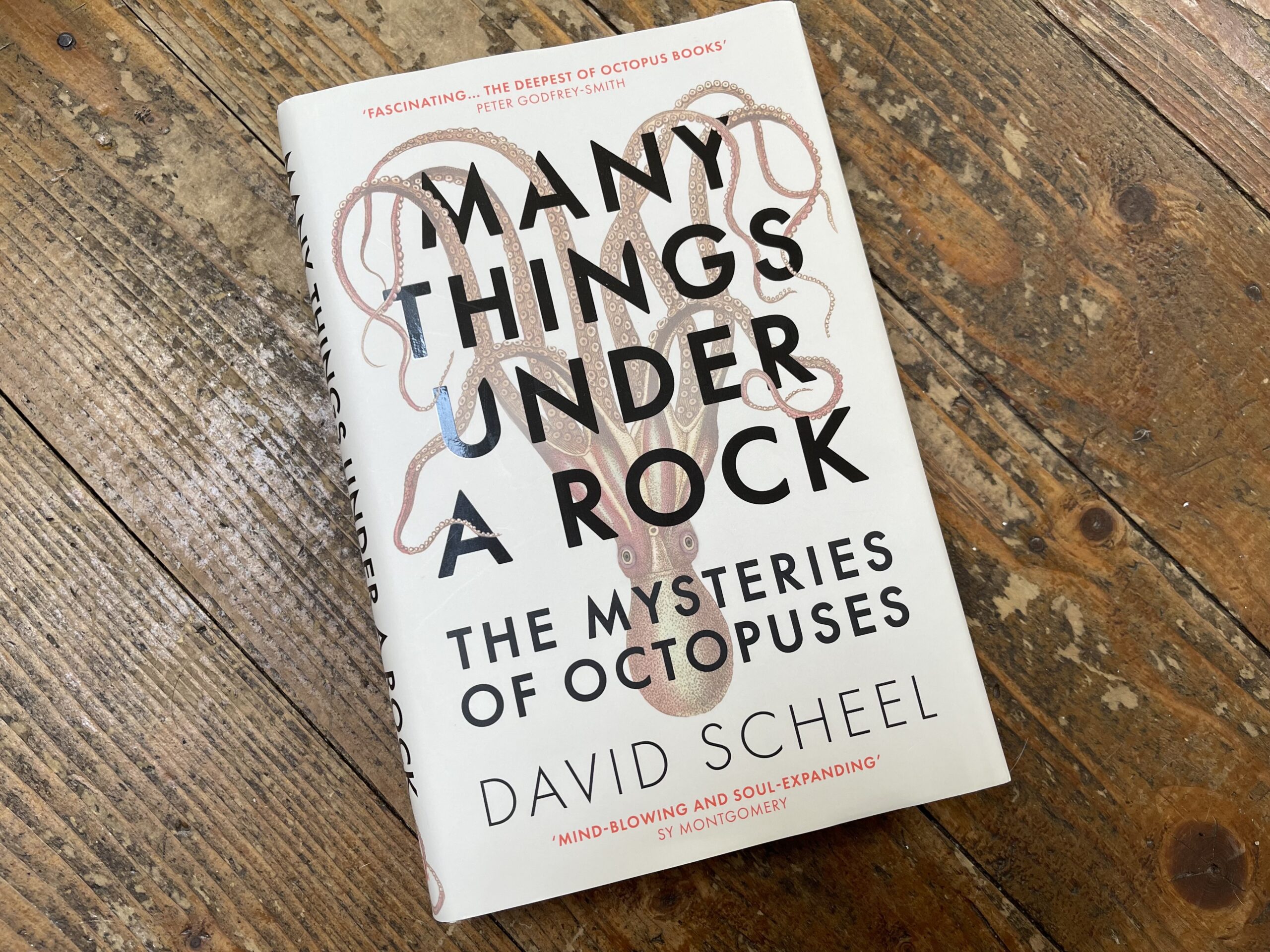We don’t read anymore. Not like we used to, so I was delighted when I received a copy of the newly published book Many Things Under a Rock – the Mysteries of Octopuses – by David Scheel. Part of my glee came from knowing who the author is, as Professor David Scheel is a leading researcher on the ecology and behavior of octopuses, and also the star of a BBC Documentary I watched called The Octopus in My House.
If you like My Octopus Teacher, you must also watch The Octopus in My House, as Scheel is the go-to octopus expert in academia, and in his film and this book, he takes a deeper dive into octopus communication, relationships, and even emotions. But first, he zooms out to examine the myths and legends, the fears and the folklores which conjured up tales of 60 feet long, 1000-pound devilfish which snatched canoes by night and ate people.
He explores the Alaska Native names for Octopus, one of which translates as “many things under a rock,” the title of the book, but takes this extra wisdom to the other side of the planet and ties this in with Aboriginal Australian names and knowledge for their Octopuses and their behavior.
Ever read about the aptly named Gloomy Octopus in Australia, making headlines for literally lashing out at fish and each other in seemingly bad-tempered displays, and throwing scallop shells? David Scheel studied them, up close and in person, helping to unravel the complex social interactions of the Gloomy Octopus population at their communal den named Octopolis.

Octopuses are famously solitary and intolerant of one another, yet at Octopolis Scheel and his collaborator noted tool use, targeted throwing of objects and broke down the behavior into three main contexts, also noting that when females throw at other females the objects hit, whereas when they throw at males they don’t. Throwing silt and throwing shells were both deliberate, yet intentionally evoked differing responses from the targets – animal agonistic social tools – and that’s rare, even in vertebrates.
Being written by a marine biologist, Many Things Under a Rock should be boring, and read like an abstract, but instead, I found it literary, alluring, and entertaining, while being informative at the same time. There are no photos, just the odd octo illustration in pencil by his daughter Laurel, but you don’t need them, as the text is descriptive enough to conjure up every notable scene, emotion, and event that David and his study subjects have encountered.
I’m naturally drawn toward any book with an aquatic theme, yet octopuses have universal appeal and you don’t need to be an aquarist to read this book, or to find it interesting. I enjoyed it, and not just because it was about octopuses, or because it dragged me away from my screens.
Many Things Under A Rock is published in the US by W.W Norton & Company, and in the UK by Hodder & Stoughton Ltd. ISBN 978-1-529-39260-9.



